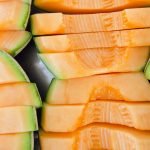A recent study found that a MODERATE intake of soy reduces breast tumors & breast cancer recurrence. Understand the difference between soy milk, soy protein, soybeans, & soy isoflavones.
Somewhere between the forbidden land of Coke, which unquestionably destroys health, and the realm of organic greens, which certainly add to vitality, there exists a world of edibles with less certain effects. Soy, for instance, once was worshipped as the savior food for vegetarians, the perfect, wholesome substitute for dairy, chicken or fish. Then, as fast as it became popular among the health-food set, soy ended up in the forbidden zone. Detractors worried that the phytoestrogens in soy might trigger cancer.
But like a resurrected 70s band, soy once again is at the top of the charts, after news of a study finding that a MODERATE intake of soy reduces breast cancer recurrence. The study followed about 5000 women in China who had been diagnosed with breast cancer between 2002 and 2006. During the study, the women who consumed the most soy (either tofu, soy milk, or edamane) had a 29 percent lower risk of dying and a 32 percent lower risk of recurrence of cancer compared to women who ate the least amount of soy. But before you go nuts, those numbers aren’t quite as dramatic as they first sound. To put it another way, those consuming the most soy had death rates at 7.4 percent and recurrence rates at eight percent compared to death rates at 10.3 percent and recurrence rates at 11.2 percent for the soy avoiders. The beneficial effect of soy protein peaked at 11 grams a day, which is the equivalent of a cup of soy milk, half a cup of tofu, or about 1/3 cup of tempeh. The average study participant consumed 47 milligrams a day.
“Women with breast cancer can be assured that consumption of moderate amounts of soy food is safe and may be associated with better outcomes,” said study director Xiao-Ou Shu, of Vanderbilt University.
The researchers believe that soy’s beneficial effect might come from the isoflavones it contains, which, ironically, are the very compounds that exert the estrogenic effect scientists had worried about. The “surprise” factor is that it looks like the isoflavones actually prevent the body’s existing high-potency estrogen (estrone and estradiol) from binding to cell receptors, which has the result of reducing the overall amount of estrogen activity in the body.
Dr. Shu says, “Soy isoflavones may compete with estrogens produced by the body. Soy isoflavones may also reduce the body’s production of estrogen, and increase clearance of these hormones from the circulation — all of which together reduce the overall amount of estrogen in the body.” Since most breast tumors depend on estrogen to grow, the less estrogen taken up by the body’s receptor sites, the better. In fact, one of the leading chemotherapy drugs, tamoxifen, works by blocking estrogen. Scientists had worried that soy would interfere with tamoxifen, but in fact, it seems to do the same thing as tamoxifen and the benefits of soy occurred even in women taking tamoxifen.
I’ve written before about the fact that most of us in the developed world have too much estrogen in our systems because of exposure to the petroleum-based xenoestrogens that come from sources like plastics, food preservatives, insecticides, and contamination, even in the air we breathe and the water we drink. These powerful and destructive synthetic estrogens, potent in amounts as small as a billionth of a gram, fill the body’s estrogen-receptor sites, taking the place of both the body’s own estrogen and the more gentle estrogens naturally occurring in plant foods. The overload of estrogen needs to be balanced or the body reacts by developing cancers and other diseases. This new study indicates that soy actually helps in balancing out the estrogen overload, perhaps by fending off those xenoestrogens. Does this mean we should all start gorging on soy to prevent cancer?
Not necessarily. First, even Dr. Shu warns that while the subjects in the study got their soy from pure sources, in the US a lot of soy comes from processed foods such as sweetened soy drinks and meat substitutes. Soy in such foods may contain many artificial ingredients. The process of making soy protein isolate, which is the soy ingredient in processed foods, strips out many of the nutrients. Also, soybeans have the highest levels of phytic acid of any grain or legume known. Phytic acid is a substance that can block the uptake of essential minerals — calcium, magnesium, copper, iron and especially zinc — in the intestinal tract. Phytic acid is neutralized in fermented soy, such as tempeh and miso, but not in soy milk or tofu. Soy also contains goitrogens, which are substances that depress thyroid function. Not a problem in small amounts, but a significant problem when consumed in larger amounts. In addition, soybeans contain enzyme inhibitors that block the action of enzymes needed for protein digestion, which is one reason many people have digestive problems after eating soy. Because of the estrogenic effect and these other factors, I absolutely do not recommend soy for children under the age of five.
While consuming moderate amounts of soy may be safe and even beneficial, it’s important to limit your intake to fermented soy products such as tempeh and miso, and to use only products made from organic, non-GMO soybeans. And, given the other problems with soy, you might want to complement your estrogen balancing program by using a natural balancing creme that contains a minimum of 500 milligrams per ounce of 100% pure, USP grade progesterone. Make sure the formula doesn’t use artificial or synthetically derived fragrances, parabens or preservatives and that it has an enhanced liposome delivery system to help move the progesterone through the skin.
:hc












Hi Jon
My daughter has been on a 50 / 50 soy and rice long life milk drink since she was 18 months old. She is now 4 years old, and she drinks approximately 4 to 5 cups a day. We put her on it because we didn’t like the idea of baby formula. I am happy to take her off the soy after reading your article and keep her on just the rice milk. Any other suggestions are much appreciated.
regards
Craig Griffiths
This is very informative for women,
but what do you or Shu have to say about protein powders made of soy and primarily used by men?
Does this mean that a man who takes in large quantities of soy in that way or tofu for example will be more feminized ie: grow more hair or lose muscle mass. Will it affect testosterone levels by lowering them when most men want an increase? I am 50. Did I hear that soy might be beneficial to my prostrate?
ThankZ! for any info.
Thunder
Dear Jon
In your soy and brest cancer article, your last paragraph advises women to limit intake “”to”” fermented soy products. Do you mean to eat exclusively these products or, on the other hand, to eat limited amounts of these products? (Very different meanings hinging on one word).
Les
I have been taking Lecithin for about 15 years ( 3 teaspoons of granules a day ) as I have read it eats the fat in my arteries, a good fat that eats bad fat. I also found an added benefit of sailing through the menopause with no problems at all. Just wondered ( after reading about soya products, if you feel I am doing the right thing?
After being diagnosed with colon cancer and liver cirrhosis my wife was advised she needed more than surgery. Having great faith in God and praying a lot she decided not to seek treatment with chemotherapy or radiation. We radically changed her diet and with supplements, natural herbs, and vitamins, today she is doing fine with no problems. Her regimen included lecithin because she needed the benefit of the phosphotidylcholine content. In the 1st chapter of the Holy Bible, Genesis, verse 12 says after God created plants He said “it was good”. Verse 29 of the same chapter says plants “shall be food for you”. In that light I don’t believe soy, used properly, can be all that bad for you.